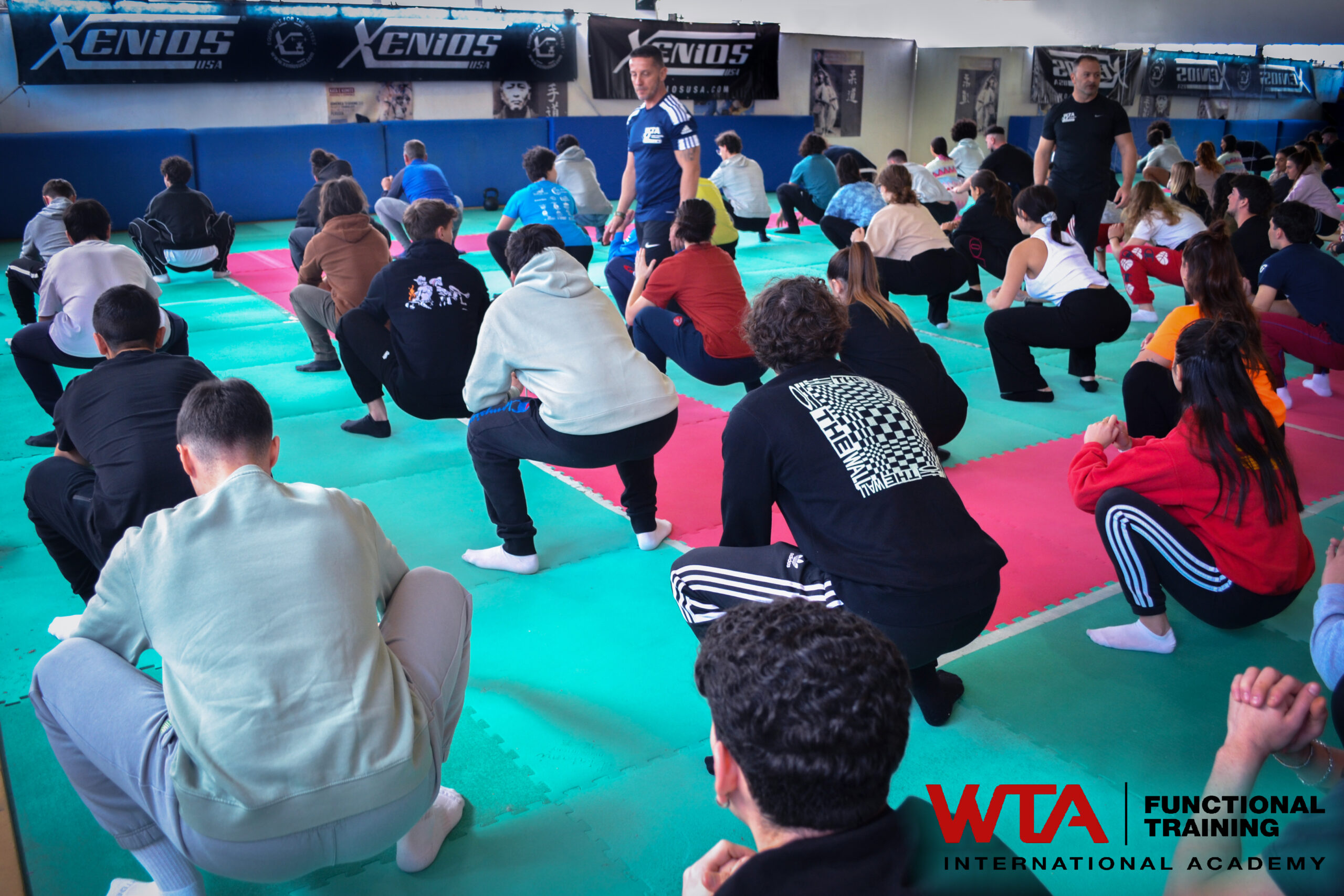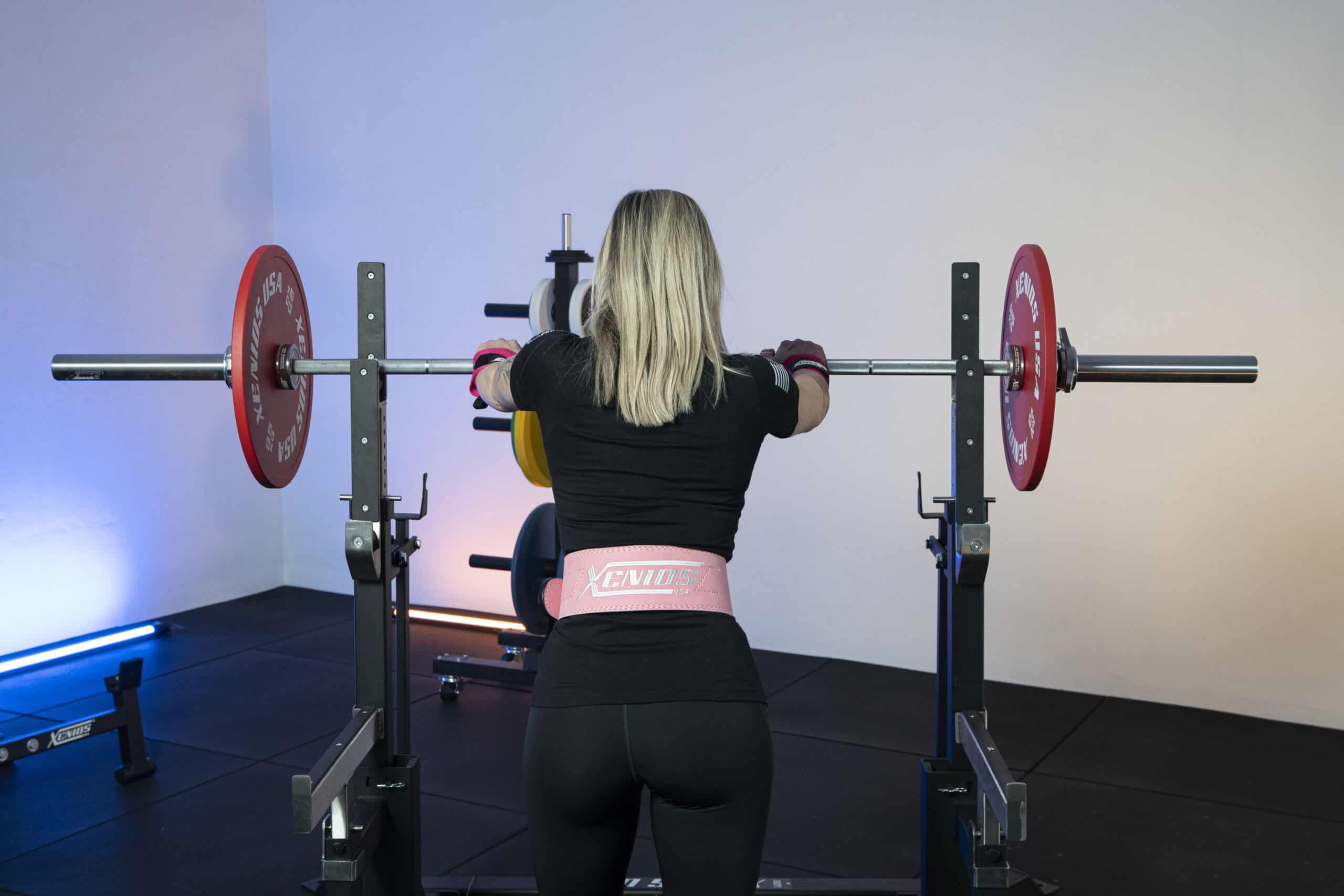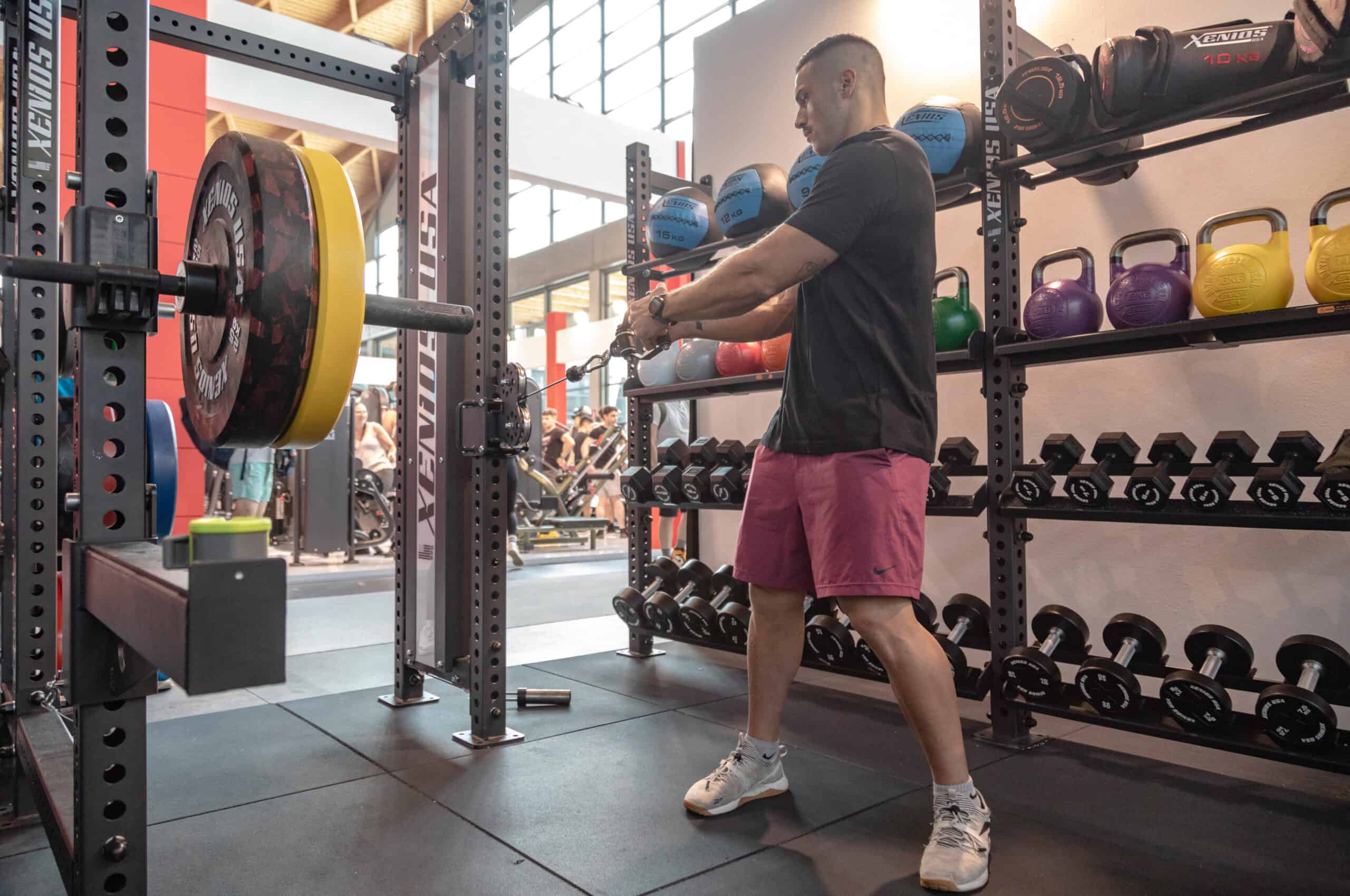Anyone familiar with the kettlebell, as a weightlifting tool, knows how versatile it is and can be applied in various ways. Today, we’ll talk about the kettlebell squat.
Also known as Girya, this tool is characterized by a particularly simple appearance, as it can be described as a cast iron, brass, or other material ball with a handle to facilitate gripping and lifting.
The ability to find kettlebells in various sizes, starting from 4 kg and going up to about 54 kg, is useful in various situations, allowing for variations in the difficulty of the same exercise and the flexibility to switch between different types of training.
Thanks to its versatility, the kettlebell can be easily incorporated into exercises that are already well-known in the gym.
Squat
The exercise of the squat is undoubtedly one of the most well-known and practiced in the world of fitness. The desire to train the gluteal muscles and, to some extent, the legs is not just driven by aesthetic factors: as the central part of the body, they play a significant role in supporting both the upper and lower parts of the human structure.
Another factor that influences the decision to train the glutes is certainly the fact that they are the largest muscles in our body: training them allows for burning a significant amount of calories.
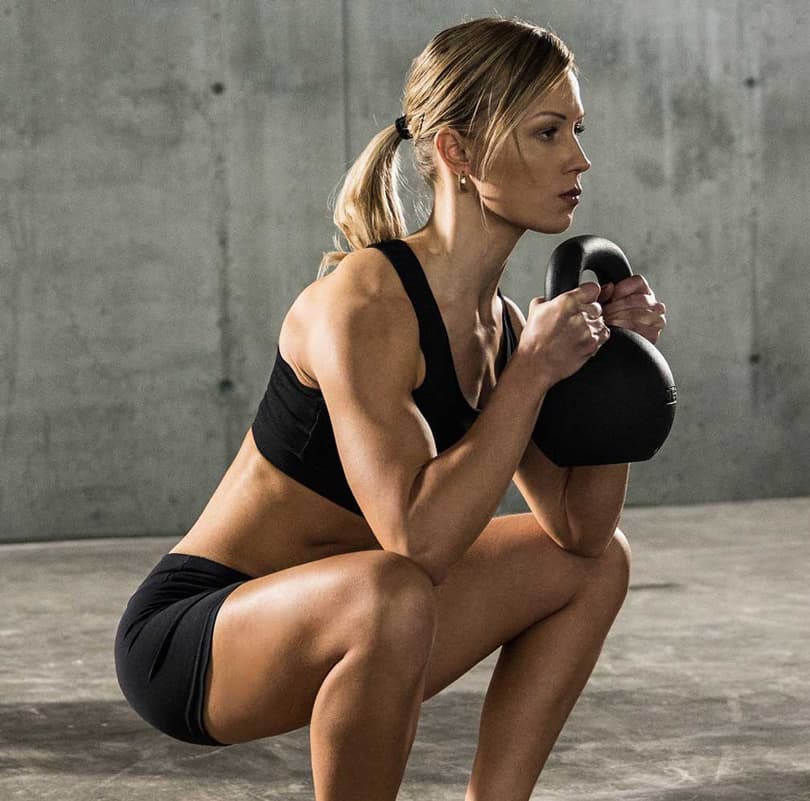
The execution of the squat allows for performing a broad exercise that is important for our body and offers various benefits. That’s why there are different ways to perform the squat, and one of them involves using a kettlebell during the exercise.
How to perform the kettlebell squat?
Adding this tool to the squat doesn’t fundamentally change the procedure.
The addition of the kettlebell serves the sole purpose of adding weight and thus increasing the difficulty of the exercise and the stimulation of the muscles involved.
Therefore, when thinking of performing the kettlebell squat, it is enough to keep in mind the correct squat movements and imagine doing them while holding the weight.
The starting position will be to spread your legs until your feet are at a distance equal to the width of your shoulders.
You start by grabbing the kettlebell, which is initially positioned on the ground between your legs, and you stand up in an upright position with your arms fully extended, hanging in front of your torso.

At this point, you can start performing the usual squat movement, which means bending your legs, squatting down until you almost create a 90-degree angle with your legs. Simultaneously with this movement, there should be a flexion at the hips, knees, and ankles.
Once you’ve started the lunge, it is important to keep your back and torso upright throughout the execution, descend with controlled movements, and to perform the exercise correctly, make sure not to let your knees extend beyond your toes.
The movement concludes with the ascent, which should be accompanied by a contraction of the glutes, making it easier to return to an upright position.
This classic squat movement will be performed with the addition of the kettlebell weight, which the athlete will hold firmly with arms extended throughout the exercise.
Using the kettlebell in the squat: some variations
One of the classic variations of this exercise is the sumo squat, which can also be performed with the added weight of the kettlebell.
The starting position for the sumo squat is different from the classic squat: the feet are spread wider apart than shoulder-width, and your toes are pointed outward. By increasing the distance between your feet, you place more emphasis on your glutes compared to your thighs.
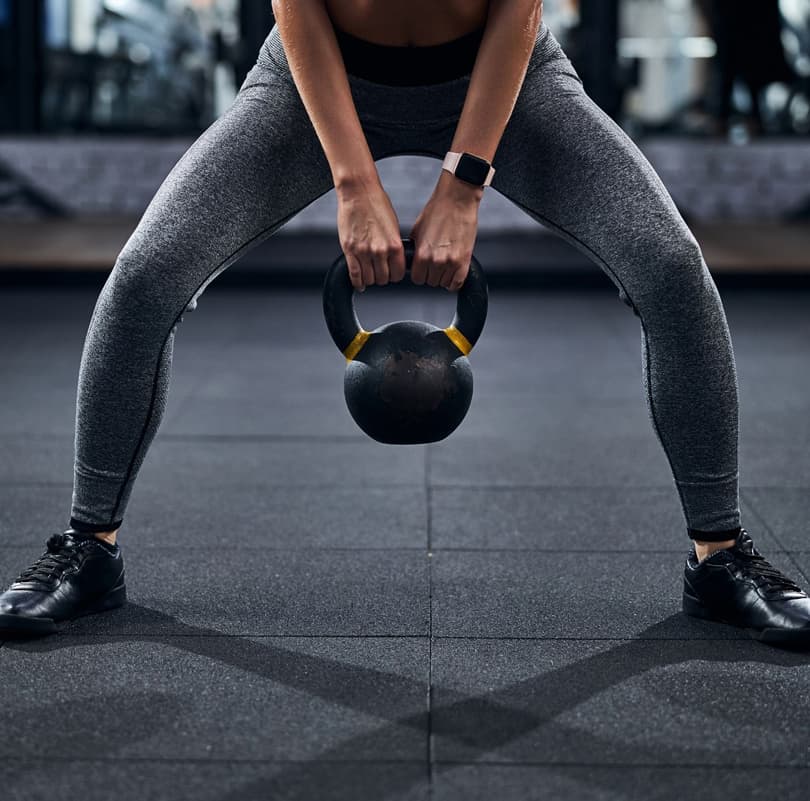
By gripping the kettlebell with your arms extended, positioned between your feet, you can start performing the movement. You’ll begin by bending your legs, keeping your abdominals contracted, and lowering as far as you can without compromising the correct posture. To finish, you’ll extend your legs and contract your glutes to return to the starting position.
A second variation is called the goblet squat. In this case, the variation mainly lies in how we hold the kettlebell.
The starting position is like that of the classic exercise, indeed you will need to perform a full squat; however, in this variation, the weight you use should be held close to your body at chest level. So, the arms are close to the athlete’s body.
You will then begin to descend towards the ground until your glutes are close to your calves, and then you start to rise again. The arms never change position and this is the uniqueness of the variant: the height at which to hold the kettlebell.
A final variant is the one-handed kettlebell squat.
In this variation, you position yourself with your legs as wide as your shoulders. You grip the kettlebell with one hand, and by bending your elbow, you will bring it above your shoulder.
The exercise begins as you lower into a squat, keeping in mind all the warnings and correct movements mentioned earlier.

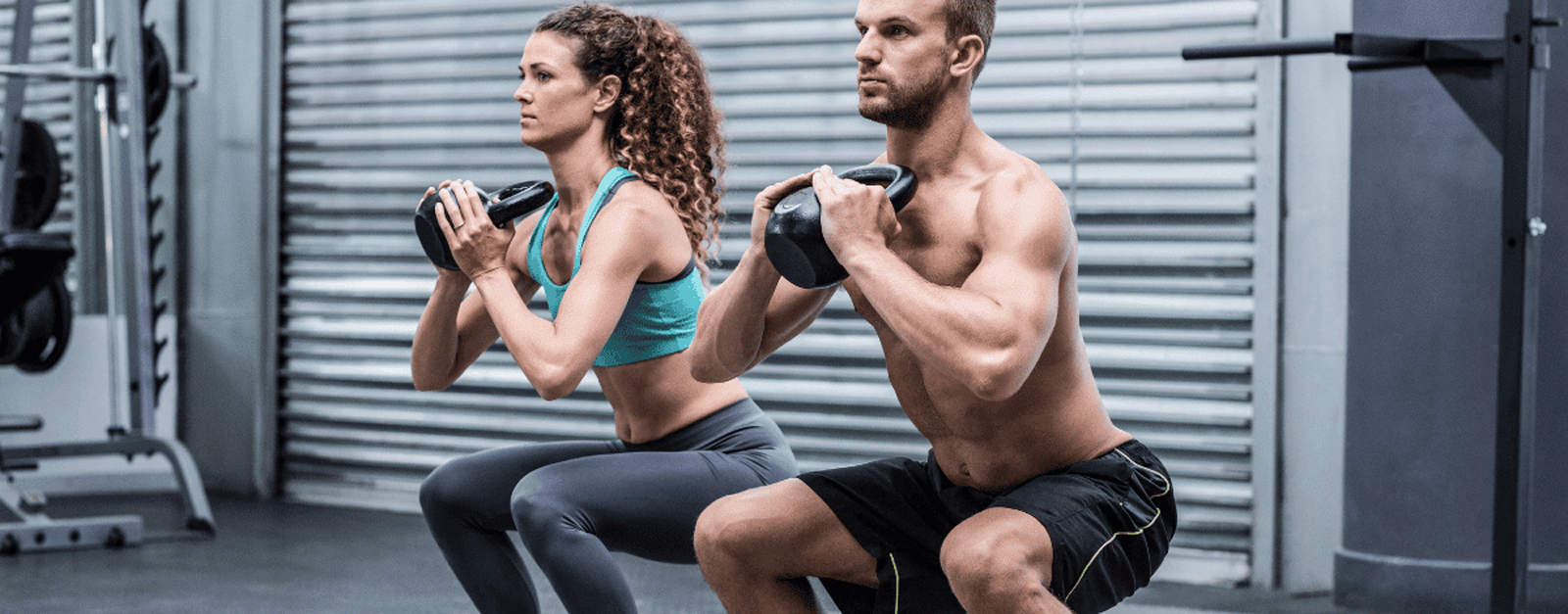

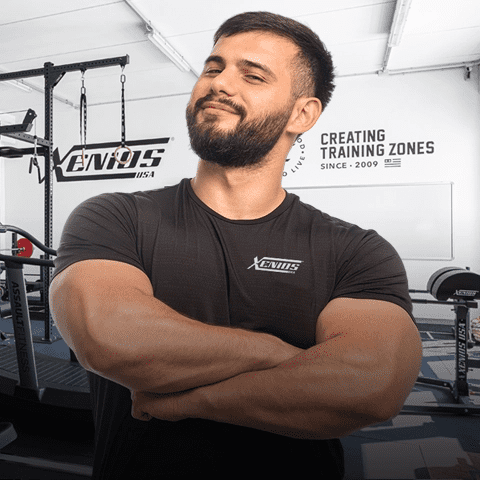
 Since 2009, we’ve been by your side, helping you create the perfect training spaces for Cross Training Boxes, Personal Trainer Studios, and professional Home Gyms.
Since 2009, we’ve been by your side, helping you create the perfect training spaces for Cross Training Boxes, Personal Trainer Studios, and professional Home Gyms.
